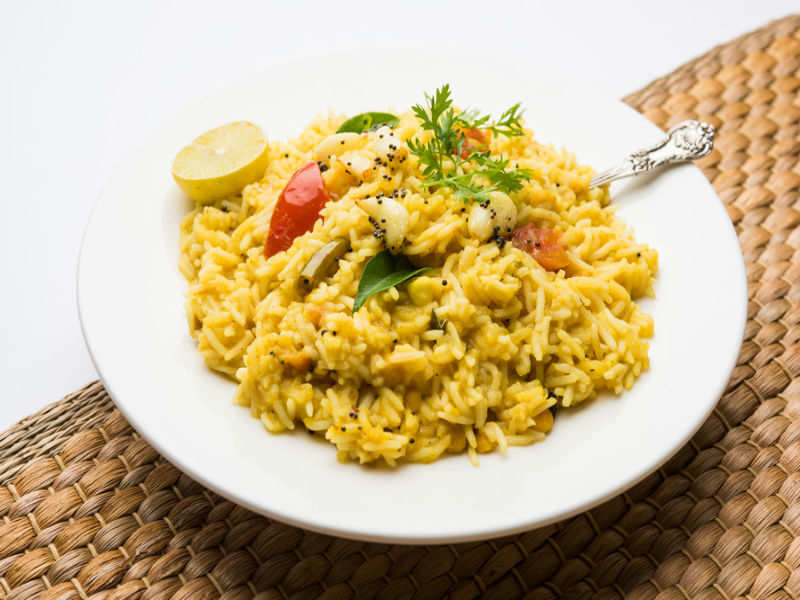CJI sets up new five-judge bench to hear Ayodhya case on Jan 29
Dhananjay Mahapatra | TNN | Jan 26, 2019, 02:20 ISTHighlights
- Reconstitution of the bench was necessitated after Justice U U Lalit recused from the case on January 10
- Justice N V Ramana withdrew citing personal reasons
- There are 16 appeals and petitions by Hindu and Muslim parties challenging the Allahabad HC’s September 30, 2010, verdict

NEW DELHI: Chief Justice Ranjan Gogoi on Friday constituted a fresh five-judge bench for the January 29 hearing of the legal battle for ownership of the 2.77-acre Ram Janmabhoomi-Babri Masjid disputed land in Ayodhya, importantly drafting in the lone Muslim SC judge in Justice S Abdul Nazeer.
The politically sensitive case relating to the over century-old litigation has been pending in the SC since 2011.
The reconstitution of the bench was necessitated after Justice U U Lalit recused from the case on January 10. This was followed by Justice N V Ramana withdrawing citing personal reasons.
With two judges dropping out, the CJI decided to draft Justice Ashok Bhushan and Justice Nazeer into the five-judge bench led by him. The other two judges on the bench are Justice S A Bobde and Justice D Y Chandrachud. The developments meant that on the previous two hearings, the court could not draw up a schedule which could have provided an inkling of when a final verdict could be expected.
TOI had on January 4 reported that as per tradition, Justice Bhushan and Justice Nazeer were expected to be part of the bench that would decide the Ayodhya dispute since they were part of the three-judge bench that had on September 29 rejected the plea of Muslim parties for reference of the vexed litigation to a five-judge bench.
But the CJI sprang a surprise on January 8 by announcing a bench that comprised himself and four future CJIs in Justice Bobde, Justice Ramana, Justice Lalit and Justice Chandrachud. However, on January 10, senior advocate Rajeev Dhavan pointed out that Justice Lalit, when he was an advocate in 1997, had appeared for a party in the criminal case relating to Babri Masjid demolition on December 6, 1992. This led to Justice Lalit immediately announcing his recusal.
On September 29, a bench of then CJI Dipak Misra and Justice Bhushan and Justice Nazeer, by 2 to 1 majority held that appeals against Allahabad HC’s verdict on Ayodhya land dispute would be heard by a three-judge bench. Justice Nazeer had leaned in favour of the Ayodhya dispute being sent to a five-judge bench.
There are 16 appeals and petitions by Hindu and Muslim parties challenging the Allahabad HC’s September 30, 2010, verdict, which had divided the 2.77 acres equally between Ram Lalla, Sunni Wakf Board and Nirmohi Akhara.
The SC had on May 9, 2011, admitted the appeals and stayed operation of the HC order. The first hearing on the appeals against the 2010 HC verdict took place on December 5, 2017. Senior advocates Kapil Sibal, Dhavan and Dushyant Dave, appearing for Muslim parties, had used politics, religion and even alleged ‘agenda’ and ‘bias’ for the “hurry’ being shown by then CJI Misra-led bench in deciding the 70-year-old litigation and sought its reference to a five or seven-judge bench.
On January 10 this year, CJI Gogoi had explained why he constituted a five-judge constitution bench to adjudicate appeals against the Allahabad HC verdict on title suits despite a three-judge bench rejecting the plea for reference of the petitions to a larger bench.
He had said, “The decision to post the matter before a five-judge bench had been taken by the CJI on the administrative side in exercise of his powers under Order VI rule 1 of the Supreme Court Rules, 2013, which mandates that ‘every cause, appeal or matter shall be heard by a bench consisting of not less than two judges nominated by the Chief Justice. Order VI rule 1 prescribes the minimum numerical strength of the bench and it is always open for the CJI to decide, having regard to the various relevant facts and circumstances, which cannot be exhaustively laid down, to constitute benches of such strength that the CJI deems it proper.”
The politically sensitive case relating to the over century-old litigation has been pending in the SC since 2011.
The reconstitution of the bench was necessitated after Justice U U Lalit recused from the case on January 10. This was followed by Justice N V Ramana withdrawing citing personal reasons.
With two judges dropping out, the CJI decided to draft Justice Ashok Bhushan and Justice Nazeer into the five-judge bench led by him. The other two judges on the bench are Justice S A Bobde and Justice D Y Chandrachud. The developments meant that on the previous two hearings, the court could not draw up a schedule which could have provided an inkling of when a final verdict could be expected.
TOI had on January 4 reported that as per tradition, Justice Bhushan and Justice Nazeer were expected to be part of the bench that would decide the Ayodhya dispute since they were part of the three-judge bench that had on September 29 rejected the plea of Muslim parties for reference of the vexed litigation to a five-judge bench.
But the CJI sprang a surprise on January 8 by announcing a bench that comprised himself and four future CJIs in Justice Bobde, Justice Ramana, Justice Lalit and Justice Chandrachud. However, on January 10, senior advocate Rajeev Dhavan pointed out that Justice Lalit, when he was an advocate in 1997, had appeared for a party in the criminal case relating to Babri Masjid demolition on December 6, 1992. This led to Justice Lalit immediately announcing his recusal.
On September 29, a bench of then CJI Dipak Misra and Justice Bhushan and Justice Nazeer, by 2 to 1 majority held that appeals against Allahabad HC’s verdict on Ayodhya land dispute would be heard by a three-judge bench. Justice Nazeer had leaned in favour of the Ayodhya dispute being sent to a five-judge bench.
There are 16 appeals and petitions by Hindu and Muslim parties challenging the Allahabad HC’s September 30, 2010, verdict, which had divided the 2.77 acres equally between Ram Lalla, Sunni Wakf Board and Nirmohi Akhara.
The SC had on May 9, 2011, admitted the appeals and stayed operation of the HC order. The first hearing on the appeals against the 2010 HC verdict took place on December 5, 2017. Senior advocates Kapil Sibal, Dhavan and Dushyant Dave, appearing for Muslim parties, had used politics, religion and even alleged ‘agenda’ and ‘bias’ for the “hurry’ being shown by then CJI Misra-led bench in deciding the 70-year-old litigation and sought its reference to a five or seven-judge bench.
On January 10 this year, CJI Gogoi had explained why he constituted a five-judge constitution bench to adjudicate appeals against the Allahabad HC verdict on title suits despite a three-judge bench rejecting the plea for reference of the petitions to a larger bench.
He had said, “The decision to post the matter before a five-judge bench had been taken by the CJI on the administrative side in exercise of his powers under Order VI rule 1 of the Supreme Court Rules, 2013, which mandates that ‘every cause, appeal or matter shall be heard by a bench consisting of not less than two judges nominated by the Chief Justice. Order VI rule 1 prescribes the minimum numerical strength of the bench and it is always open for the CJI to decide, having regard to the various relevant facts and circumstances, which cannot be exhaustively laid down, to constitute benches of such strength that the CJI deems it proper.”
Download The Times of India News App for Latest India News.




































All Comments ()+^ Back to Top
Refrain from posting comments that are obscene, defamatory or inflammatory, and do not indulge in personal attacks, name calling or inciting hatred against any community. Help us delete comments that do not follow these guidelines by marking them offensive. Let's work together to keep the conversation civil.
HIDE